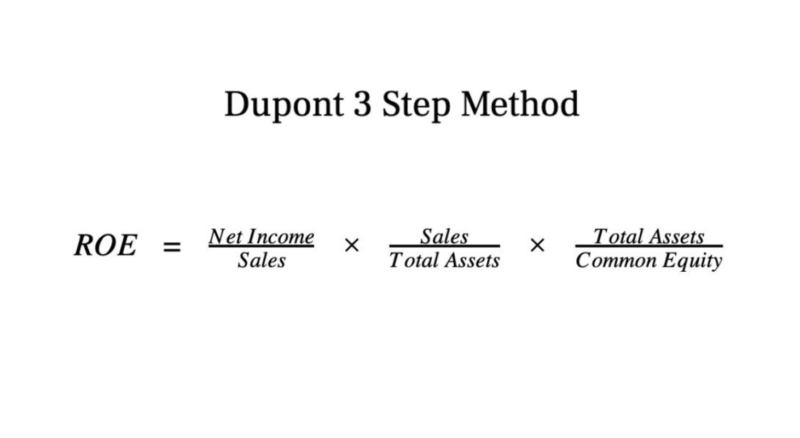The impact of sugar-sweetened beverages consumption on constipation: evidence from NHANES Full Text

Following this formula, an investor can easily determine whether the financial position is moving upward or declining over a period. Trend analysis is used widely in financial statements, business forecasting, and stock market analysis to Retail Accounting make decisions considering the patterns of historical data. For example, past trends do not always function as good predictors of future results because unexpected factors or conditions change. Trend analysis aligns well with other analytical tools and current market intelligence to give a wholesome approach towards strategic planning.
Method #1 – Access From The Excel Ribbon
I have a Masters of Science degree in Applied Statistics and I’ve worked on machine learning algorithms for professional businesses in both healthcare and retail. I’m passionate about statistics, machine learning, and data visualization and I created Statology to be a resource for both students and teachers alike. My goal with this site is to help you learn statistics through using simple terms, plenty of real-world examples, and helpful illustrations. To show the trendline equation, check the Display Equation on chart box. For better accuracy, you can show more digits in the trendline equation.

Data Gathering and Preparation
From 1 January 2000 to 30 September 2024, 373 articles meeting the inclusion criteria were retrieved from the Web of Science Core Collection database (Figure 2), comprising 258 original research articles and 115 review articles. Overall, this field yearly literature output demonstrates a steady upward trend (Figure 3A). This could be due to many reasons, including the increase in the price of assets and stocks, as well as job growth. Reasons for upward trends include a strong economy and a rise in profit.
- We need to use the below steps to find the output using TREND function in Excel.
- These methods serve as powerful tools to extract meaningful insights and make predictions based on historical data.
- Trend analysis can be applied to various financial metrics, such as revenue, profits, margins, and expenses, to help identify company performance trends.
- The key components of income statements and balance sheets typically analyzed through trend analysis include sales, cost of goods sold, operating expenses, and net income.
Area Charts

Trend analysis is a statistical technique for identifying patterns or changes in data over a certain period. It helps predict how a business is likely to evolve in the future and helps you make good decisions. Be it finance, marketing, supply chain management, economics, healthcare, or environmental sciences, trend analysis is used across many domains to formulate strategies by deriving empirical evidence from past experiences. Trend analysis depicts a method of studying patterns relating to financial data over time. This provides insight into market movements for businesses and investors, allowing them to make better-informed decisions.

By analysing trends, a company can track stock of growth rate, examine and anticipate future performances, and consider risk exposures. Have you ever wondered how to uncover hidden insights within your data, predict future trends, and make informed decisions that can steer your business or projects toward Certified Public Accountant success? Analyzing keyword co-occurring may reveal core themes and research priorities in psychological interventions for stroke survivors.
- Financial indicators such as revenue, profits, margins, and expenses can be utilised to perform trend analysis.
- Were responsible for downloading the data and conducting the requisite analysis.
- Initially, we generated an author publication network map to reveal the core authors and their publication volumes in this field.
- Analyzing cross-sectional trends often involves descriptive statistics, hypothesis testing, and data visualization techniques like bar charts, pie charts, and histograms to compare and contrast different groups.
- Through VOSviewer and CiteSpace, we identified the major contributors and high-impact literature in this field.
- Trend analysis aligns well with other analytical tools and current market intelligence to give a wholesome approach towards strategic planning.
Analyzing articles published in these journals provides theoretical and empirical foundations for this study. Using bibliometric analysis, this study systematically analyzed the developmental trends in psychological intervention research focusing on resilience and psychological well-being among stroke survivors. Through VOSviewer and CiteSpace, we identified the major contributors and high-impact literature in this field. The findings revealed the knowledge structure of this research field, providing scientific evidence for advancing psychological interventions targeting resilience and psychological well-being among stroke survivors.
CHARTEXPO
For example, trend percentages can be calculated over five years using income statement information from different companies. Trend analysis can evaluate a company’s financial health by comparing the movement in each line item across periods. It identifies changes in terms of amount or percentage year over year. The key components of income statements and balance sheets typically analyzed through trend analysis include sales, cost of goods sold, operating expenses, and net income. The primary drawback of trend analysis is the faulty presumption that historical patterns will persist in the future, which may not hold true in a changing and unpredictable environment. External factors that are not represented in the historical data, such as events, rules, consumer preferences, or market conditions, can also have an impact on trend analysis.

To present the trends of this field, we included not only intervention studies but also other types of studies. This method ensures a broader understanding the trends of resilience and psychological well-being in stroke survivors, while also identifying the scientific foundation of intervention strategies. This bibliometric analysis examined 373 publications on psychological interventions for stroke survivors from 2000 to 2024, focusing on research trends in resilience and psychological well-being. Analysis indicated that the most productive authors included Vranceanu Ana-Maria, Rosand horizontal analysis formula Jonathan, and Lin Ann. The United States, United Kingdom, and China emerged as major contributing countries, with Harvard University as the most productive institution.
Av. Hermes da Fonseca, 1542
Bairro: Tirol
Cidade: Natal/RN – Brasil
CEP: 59020-000
[email protected]
+55 (84) 4006.0700